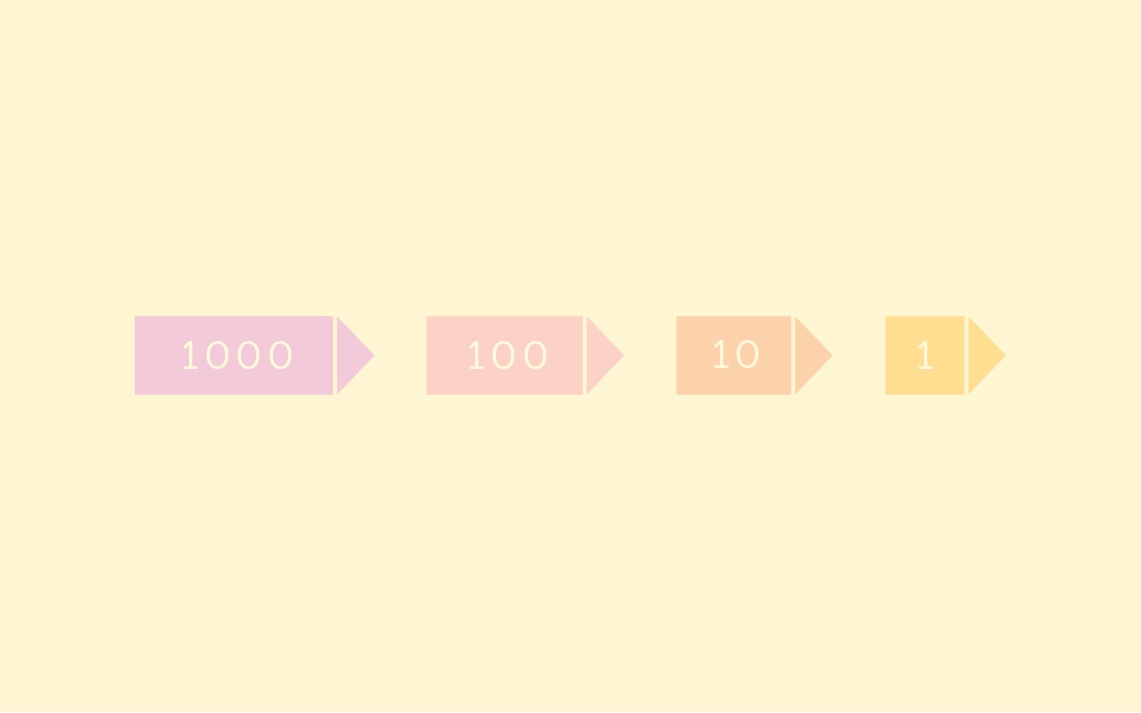6 strategies to help pupils develop an early understanding of place value
Number and place value are foundational concepts for all mathematics learning. This means we need to address how to teach place value as early as possible so that pupils can secure their knowledge of the concept.
How do you develop an early understanding of place value in the primary school classroom? Let’s start by defining place value. It is a system for writing numerals where the position of each digit determines its value. Each value is a multiple of a common base of 10 in our decimal system.
Here are some teaching strategies I’ve found useful when helping learners develop an early understanding of place value.
Progress through concepts systematically
Developing an understanding of place value requires systematic progression. Each new concept should build on previous learning experiences so that pupils can gain deeper, relational understanding as they go.
This approach ensures knowledge is developed, refined and applied correctly as numbers become meaningful tools for solving problems rather than just a series of symbols on a page. Most importantly, this starts our learners on the path to becoming confident problem solvers and pattern spotters.
Use the CPA approach to establish meaning
The CPA (Concrete, Pictorial, Abstract) approach helps pupils connect a physical representation of a number (concrete manipulatives) to that same quantity as shown in drawings or graphics (pictorial), and finally to the actual written name and symbol for that number (abstract).
I view concrete resources as meaning makers. They add meaning to abstract representations of numbers so that when learners progress to the abstract phase, they know what those numbers stand for, what they mean, and how they relate to each other.
If a pupil can identify the meaning of each component in a problem, they are far more confident in how they work to solve it.
Teach the ‘ten-ness of ten’
‘Ten’ is the foundational building block of our Base 10 numeration system. At an early level, spend as much time as possible studying the numbers from 0 to 10, as understanding the ‘ten-ness of ten’ is crucial for maths attainment, and it cannot be rushed.
Once this understanding is locked-in, follow this with an introduction to number bonds. Start with the additive relationships between numbers less than 10, then progress to adding and subtracting up to 10. This ensures that learners see 10 as an important ‘base’ number in all of their future maths applications.
Progress to 20, then to 40
I make sure to take my time teaching ten and teen numbers so that a solid understanding of place value with numbers up to 20 is properly established.
I then extend the place value concept by working with numbers up to 40 — followed by addition and subtraction to 40.
Because pupils have learned to make 10 and use number bonds, they are ready to begin working with multi-digit numbers and regrouping. Focusing on numbers to 40 while developing the concept of place value also allows learners to associate numbers with easily-managed, physical quantities (meaning makers).
Transform Your Maths Assessment
Insights — our online assessment tool — gives you instant, powerful data to identify gaps and improve results.

Use base 10 blocks for 100 and 1000
The work we’ve done building a gradual understanding of place value will have prepared pupils to progress to three-digit numbers. So we can now move on to studying up to 100.
We start here by developing an understanding of numbers in multiple place value representations. For example, one thousand five hundred is 15 hundreds or 150 tens.
Once they get the hang of that, learners then sharpen their counting, reading, and writing skills for numbers up to 1,000. Moving into addition and subtraction with numbers up to 1,000 — with and without regrouping — is the next step.
Here is where our work establishing an early understanding of place value is key, because pupils will intrinsically know why these algorithms work for three and four-digit numbers. Base 10 blocks are a great tool to help solidify those earlier place value ideas when working with numbers up to the thousands.
Approach larger numbers the same way
The CPA approach is once again our answer to learning place value in larger numbers. Apply those skills and always be on the lookout for chances to extend number and place value concepts.
For example, you can identify and complete number patterns or find missing digits on a number line.
From there you can explore strategies for mental mathematics as well as addition and subtraction for numbers up to 10,000. Take learners even deeper by having them explore place value with an emphasis on multiplication, division, and decimals.
Mastering maths concepts like place value in the early years is not just key to success in the classroom. It prepares learners for a lifetime of deep mathematical understanding by giving them invaluable real-world tools like resilience and problem-solving ability.
And a confident problem solver in maths is a confident problem solver in life.
Learn more:
Manipulatives in Maths — A Classroom Guide for Teachers
Number Sense Explained: How it fuels maths success
Common myths and misconceptions surrounding the Concrete, Pictorial, Abstract (CPA) approach
